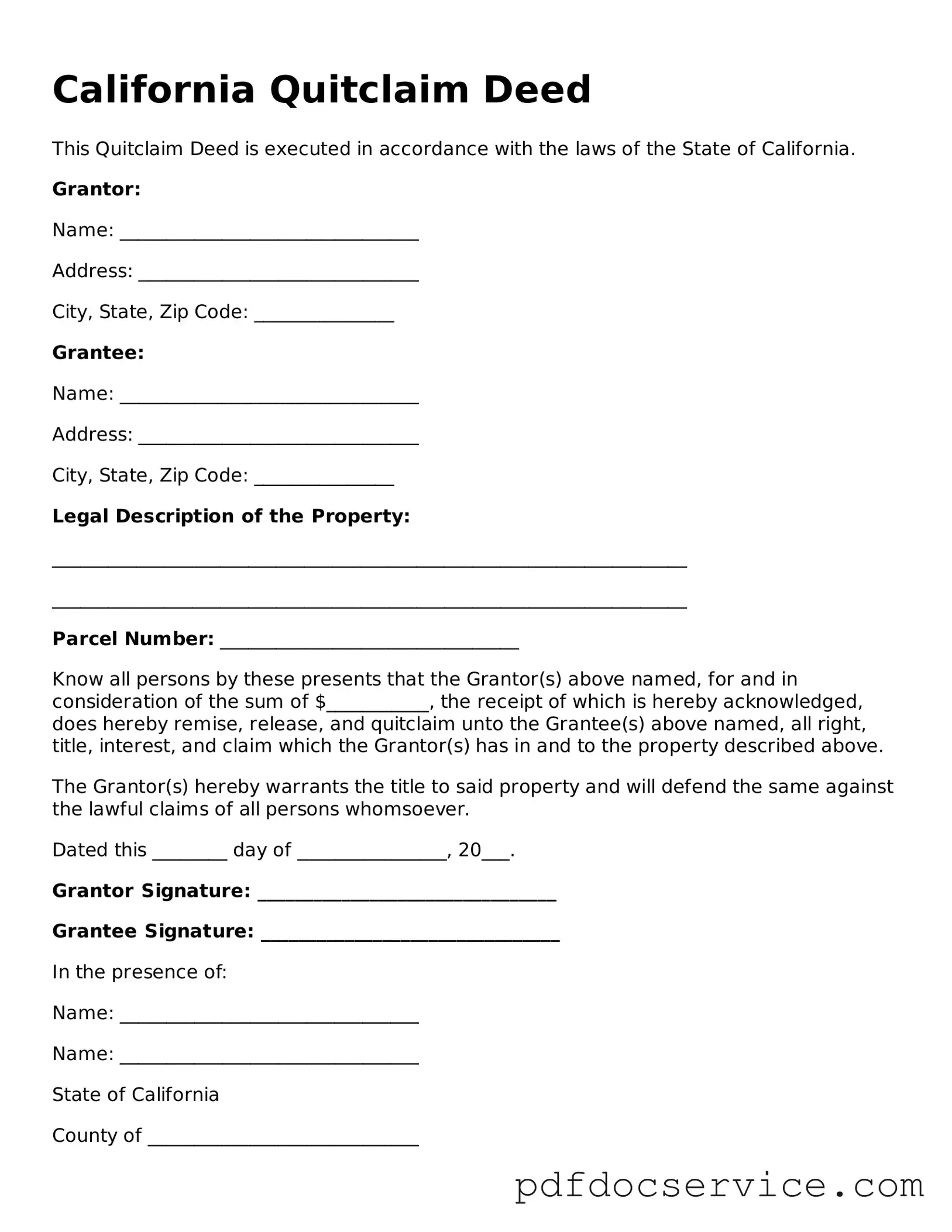What is a Quitclaim Deed in California?
A Quitclaim Deed is a legal document used to transfer ownership of real estate from one party to another. Unlike a warranty deed, it does not guarantee that the title is free from claims or liens. The grantor (the person transferring the property) relinquishes any interest they may have in the property, but does not provide any warranties about the title.
When should I use a Quitclaim Deed?
Quitclaim Deeds are commonly used in specific situations, such as:
-
Transferring property between family members.
-
Removing a spouse from the title after a divorce.
-
Clearing up title issues when the ownership is unclear.
-
Transferring property into a trust.
How do I complete a Quitclaim Deed in California?
To complete a Quitclaim Deed, follow these steps:
-
Obtain the Quitclaim Deed form, which can often be found online or at a local office supply store.
-
Fill out the form with the required information, including the names of the grantor and grantee, the property description, and the date of transfer.
-
Have the document signed by the grantor in front of a notary public.
-
Record the completed deed with the county recorder’s office where the property is located.
Is notarization required for a Quitclaim Deed?
Yes, notarization is required in California. The grantor must sign the Quitclaim Deed in front of a notary public. This step ensures that the signature is verified and helps prevent fraud.
Are there any fees associated with filing a Quitclaim Deed?
Yes, there are typically fees for recording the Quitclaim Deed with the county recorder’s office. Fees can vary by county, so it’s advisable to check with your local office for the exact amount. Additionally, there may be fees for notarization.
Can a Quitclaim Deed be revoked?
Once a Quitclaim Deed is executed and recorded, it cannot be revoked unilaterally. However, the parties involved may agree to create a new deed to reverse the transfer, or the grantor may need to go through legal channels to reclaim ownership.
What is the difference between a Quitclaim Deed and a Warranty Deed?
The main difference lies in the guarantees provided. A Quitclaim Deed transfers whatever interest the grantor has without any warranties. In contrast, a Warranty Deed guarantees that the grantor holds clear title to the property and will defend against any claims. Warranty Deeds offer more protection to the grantee.
Do I need an attorney to prepare a Quitclaim Deed?
While it’s not legally required to hire an attorney to prepare a Quitclaim Deed, it may be beneficial, especially if the property transfer is complex or if there are concerns about the title. An attorney can provide guidance and ensure that the deed is properly executed and recorded.
What happens after I file a Quitclaim Deed?
After filing the Quitclaim Deed, the county recorder’s office will process the document and update the public records. The grantee will then officially hold the interest in the property as stated in the deed. It’s a good idea for the grantee to keep a copy of the recorded deed for their records.
